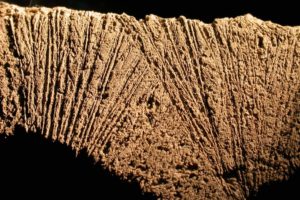
The goal of the American Concrete Institute (ACI) 306 Guide to Cold Weather Concreting is to give guidance so that cold-weather concrete satisfies the performance requirements.
The concrete industry rule of thumb is that cold weather concrete provisions start when the air temperature falls below 40°F.
These practices prevent damage due to early-age freezing, ensure that concrete develops the necessary strength, and limit rapid temperature changes. Even if concrete hydration does not stop due to the freezing of water, loss of water can cause the paste to contract. This can compromise the durability of the concrete. The necessary degree of concrete protection increases as the ambient temperature decreases. This may seem obvious, but contractors may neglect it.
ACI 306
ACI 306 provides guidance on how long to maintain concrete curing conditions to protect it from freezing and rapid loss of water. At some point, the concrete strength is high enough to withstand one freeze/thaw cycle. The industry standard is 500 psi, but this was likely an off-the-cuff estimate by T.C. Powers in the 1940s.
ACI 306 contains a series of tables and equations dating from 1948, before pozzolans were in widespread use. User inputs include portland cement content, size of member, and ambient conditions. In 1976, the curves changed to reflect a base temperature of 40°F instead of 32°F. That is, they assume hydration stops at temperatures below 40°F. Modeling for heat loss from the concrete employed Heisler charts before computers became available.
Contractors, engineers, and owners all want to manage risk. To have certain success in managing concrete in cold weather, we could enclose all concrete, heat to 80°F, and water cure. The concrete would never freeze. To have certain failure, we could place concrete in -25°F with metal forms and no insulation. Ideally, we want to build somewhere in the middle.
The problem we have with ACI 306 is that if we follow the rules, we always have good concrete. But even if we don’t follow the rules, we might still have good concrete. This occurs so often that ACI 306 is held in contempt. It is a consequence of the data used to formulate the tables in ACI 306.
Updating ACI 306 for today’s materials
There needs to be an update to the cold weather concreting practices recommended in the ACI 306 documents. Unfortunately, this would require research that attracts little academic interest because such research does not lead to tenure.
How can we change ACI 306? First, the guidance for duration of covering concrete and minimum incoming concrete temperature to the formwork should reflect the materials we use today. Cement today produces six times as much heat as the cement used in 1948.
Next, ACI 306 should give guidance on heating enclosed areas to avoid dusting, drying, and carbonating of concrete surfaces, as well as monitoring carbon monoxide and -dioxide concentrations.
Third, ACI 306 is full of tables for estimating the concrete temperature. These assumptions are based upon 100% portland-cement concretes from the 1940s without pozzolans or admixtures. Instead, we should have guidance on heat development based on water content, modern admixtures, and proportions of fly ash, slag, and silica fume.
For example, water has a high heat capacity (5 times larger than the heat capacity of the aggregate and cementitious material). It takes more heat to change the temperature of a pound of water by 1 degree than to change the temperature of a pound of aggregate by 1 degree. Concrete low in water content is more susceptible to cooling because there is less water to moderate heat loss.
Some of the data to revise 306 guidance is available but has not been collated and made into a form useable by practitioners. Some of the data needs to be developed in order to update ACI 306.
This post is based on a Minnesota Concrete Council (MCC) presentation given by Kevin MacDonald on 9-13-18.
